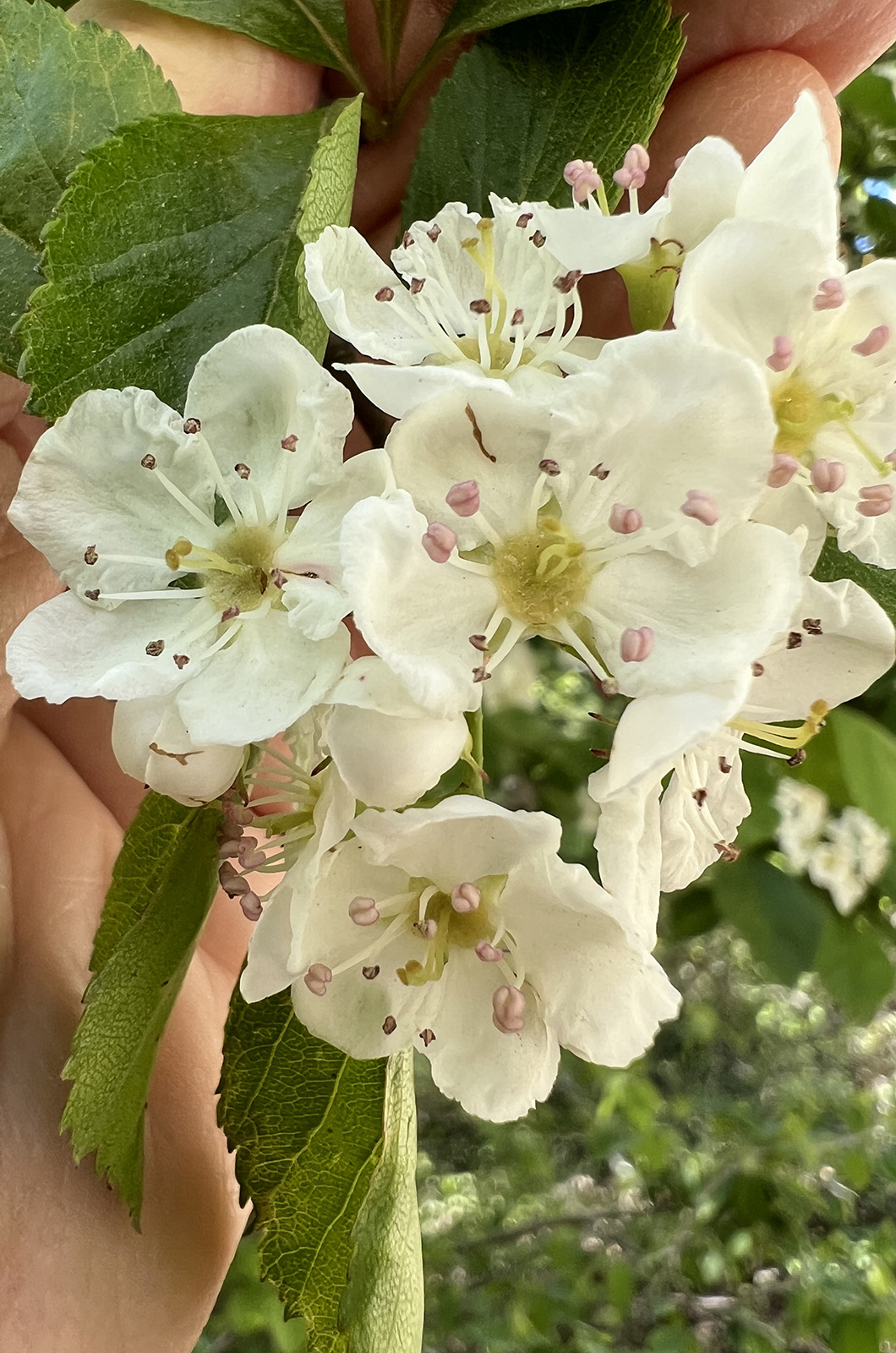There is a plant that can only be found on our Island and nowhere else in the world. Let that sink in for a minute.
The existence of endemic species is endlessly fascinating, even as it describes something limited in location. Endemic organisms are those that can be found in a defined geographic location only. This can be because of very specific habitat needs, or isolation because of factors that prohibit the movement of organisms, such as mountains or islands.
Until recently, there was only one known location of a very rare variety of the hawthorn tree. The species in question is crataegus schizopylla, also known as the cleft-leaved or cutleaf hawthorn. It is the only endemic plant on Martha’s Vineyard and has been the subject of a search by plant pursuers Margaret Curtin and Greg Palermo.
Margaret, a self-proclaimed crataegus geek, knew of one Island population of the shrub before she and Greg began to search in earnest. Through very dogged efforts and a visit from a hawthorn expert, three more locales for this species have been discovered.
Finding and naming this tree was not an easy task for them or others, as the identification and taxonomy of hawthorns in North America has been described as one of the “most notorious challenges in regional botany.” More than 1,000 names for hawthorns have been described when, in fact, there are likely less than 200 species, creating much confusion for understanding the current and historical members of this genus.
We have William Webster Eggleston to thank for making sense of the hawthorn taxonomic trickery. Mr. Eggleston was another crataegus geek and could be called the father of hawthorn classification. He was an American botanist who worked diligently to sort out the mass mess of hawthorn species. Working in the early 20th century, Mr. Eggleston, a New England native who is buried in Foxboro, wrote the book (actually, many books) on the presence and classification of this species throughout North and Central America.
The genus name crataegus is rooted in words meaning strength and sharp. Strength describes the strong wood and perhaps alludes to its use as a hedge tree protecting the home and property within. Sharp speaks to the spines, prickles, or thorns on the plant. Flowering in the late spring, hawthorns have also been called May Tree and May Flower. Other names for these trees include haw, haw apple and thornapple, as they produce an edible fruit.
There are other hawthorns found on the Island, though none as rare as the extant population of cleft-leaved hawthorn. French novelist Marcel Proust well understood their specialness, capturing sadness and euphoria when he wrote of these trees, “Oh, my poor little hawthorns,’ I was assuring them through my sobs, ‘it isn’t you who want me to be unhappy, to force me to leave you. You, you’ve never done me any harm. So I shall always love you.’ And, drying my eyes, I promised them that, when I grew up, I would never copy the foolish example of other men, but that even in Paris, on fine spring days, instead of paying calls and listening to silly talk, I would set off for the country to see the first hawthorn-trees in bloom.”
Suzan Bellincampi is Islands director for Felix Neck Wildlife Sanctuary in Edgartown and the Nantucket Wildlife Sanctuaries. She is also the author of Martha’s Vineyard: A Field Guide to Island Nature and The Nature of Martha’s Vineyard.





Comments
Comment policy »